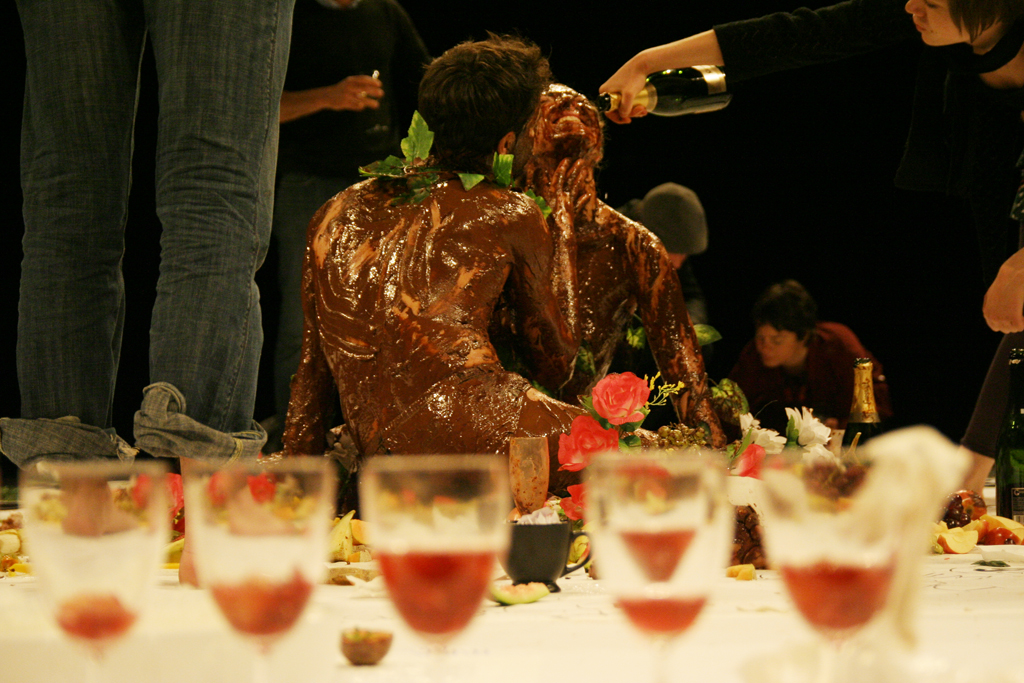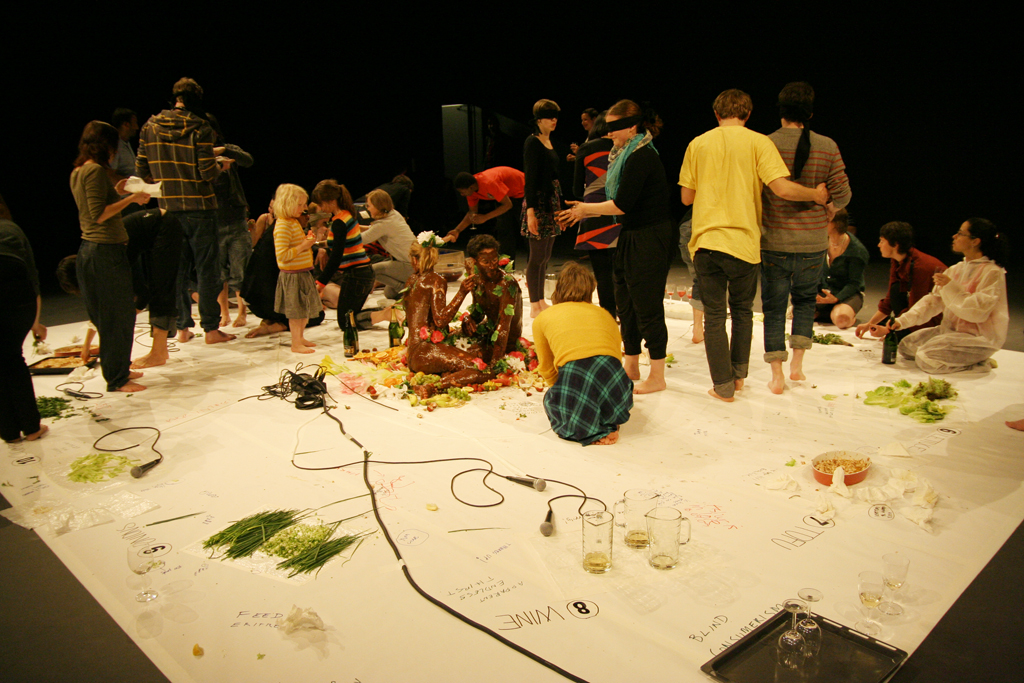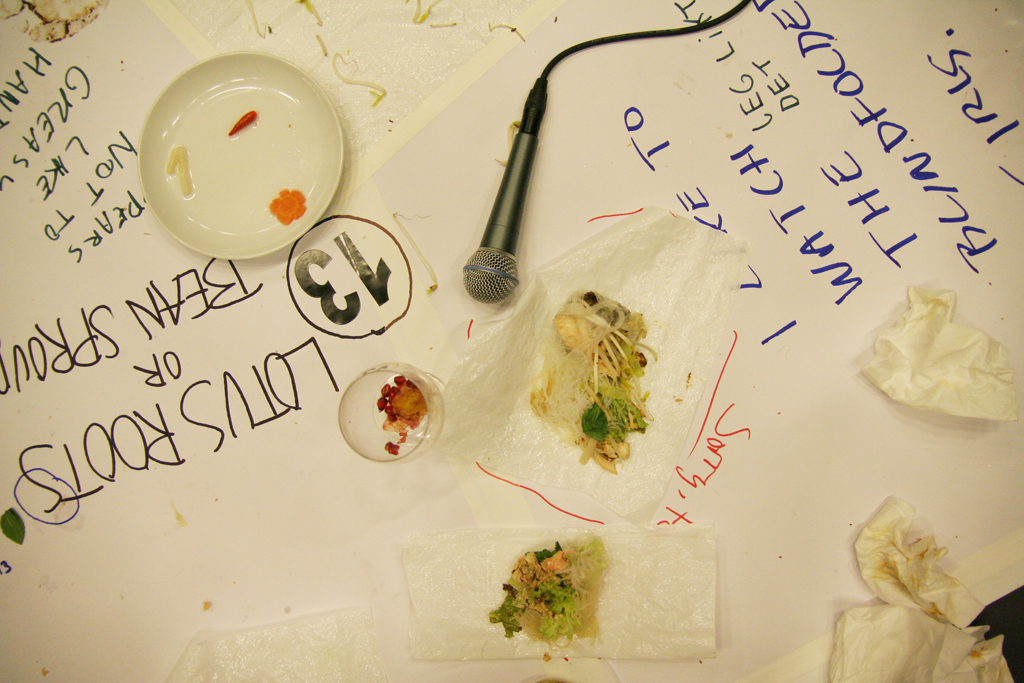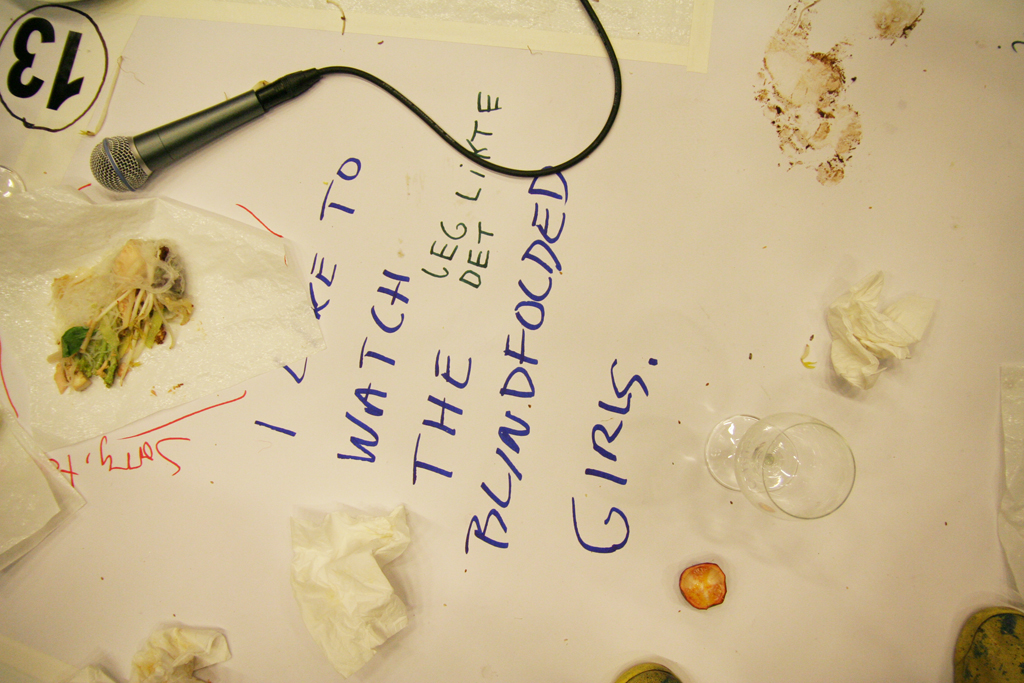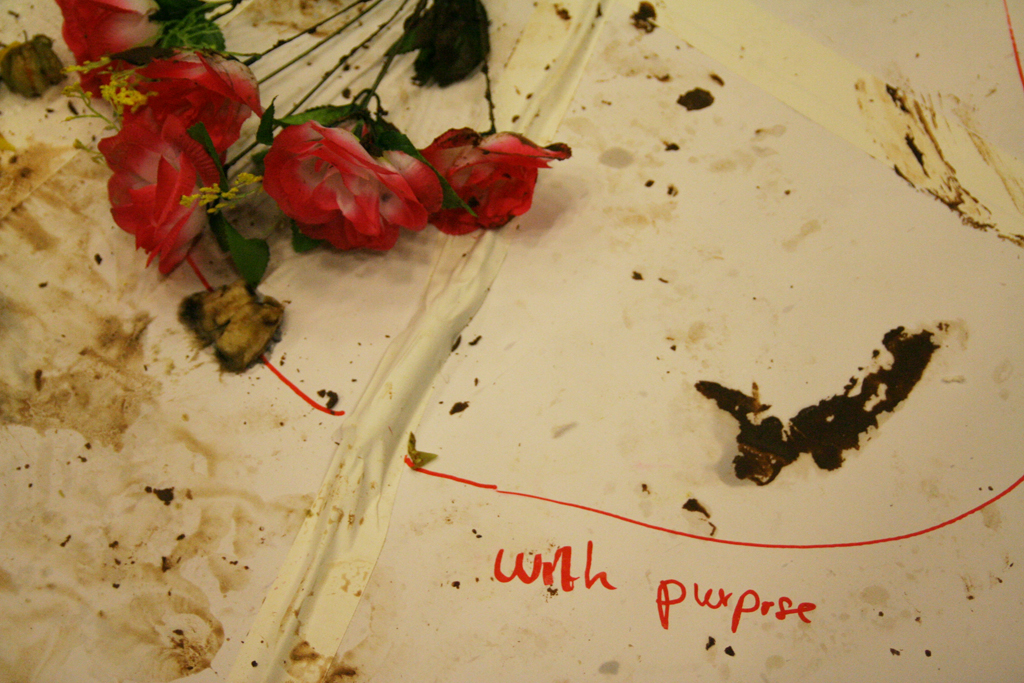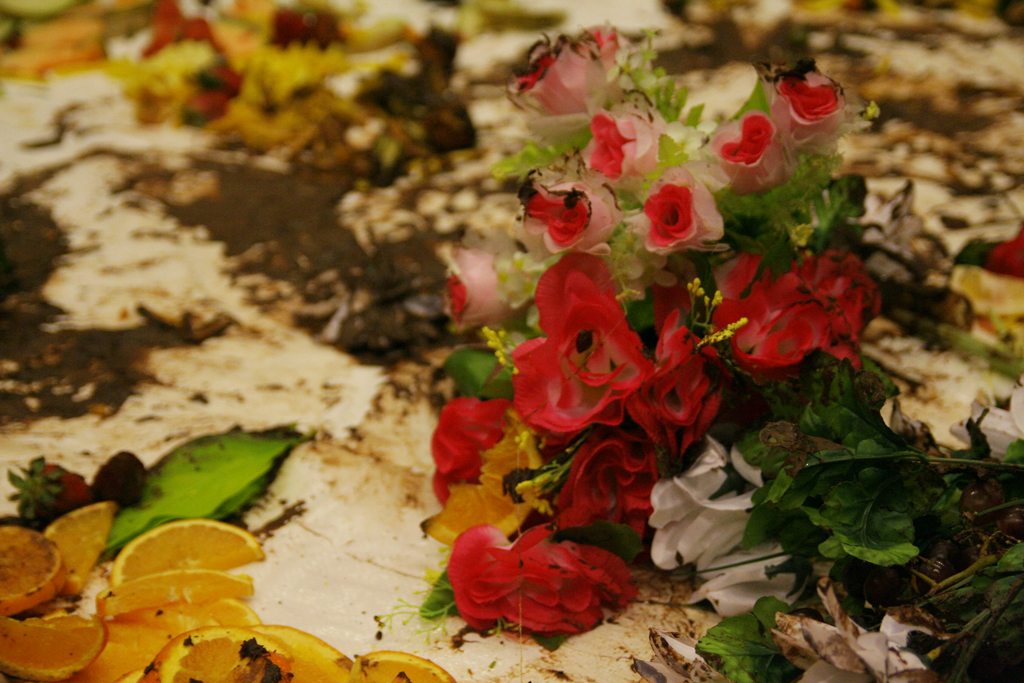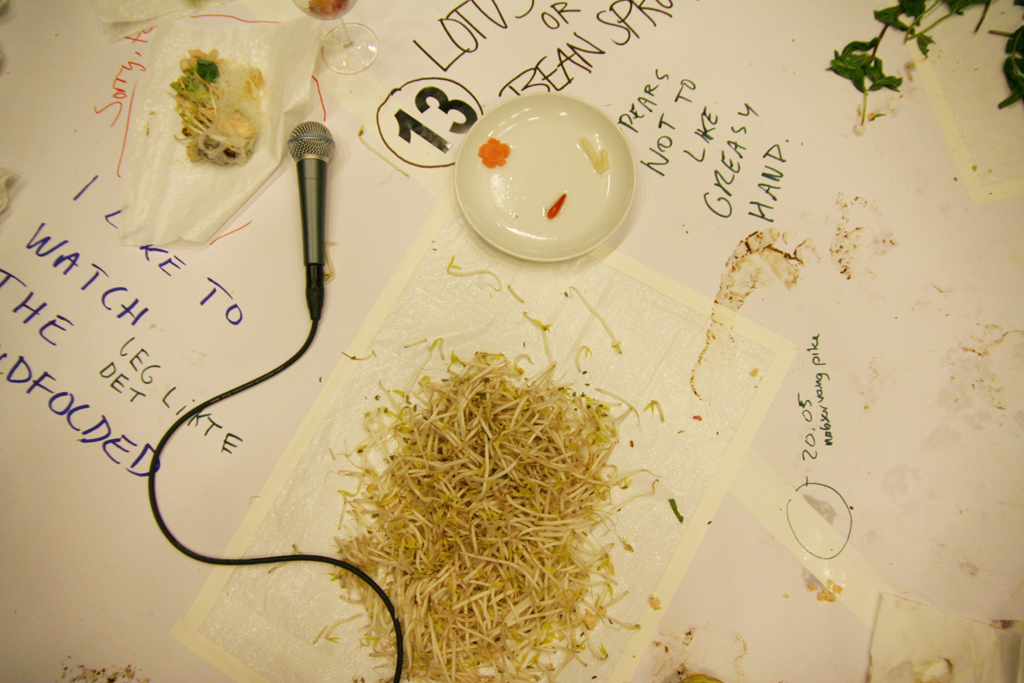Prisoners cinama
Paticipatory performance, Oslo, The Norwegian stage of National Dance, 2009
Prisoners Cinama by Annesofie Norn in collaboration with the performers Hanna Barfod and Domenico Giustino.
I we wanted to take the audience to a humorously simulated level four. A state of deep consciousness.
At this level, thoughts visually manifest as objects or environments. When this level is reached, the every day closed-eye visualizations seems to calm down and fade away, leaving behind an intense flat ordered blackness. The visual field becomes a sort of active space. A side component of this is the ability to feel motion when the eyes are closed and an amplification of other senses.
Opening the eyes returns one to the normal physical world, but still with the closed-eye visualizations object field overlaid onto it and present. In this state it is possible to see things that appear to be physical objects in the open-eye physical world, but that aren’t really there…
The audience was divided into couples of two. One was blindfolded and the other was leading and feeding the blindfolded partner. The floor was marked as a square on which the dinner was laid out in stations. The as the dinner guests would proceed towards the chocolate desert in the center they would note their experiences on the floor through the loudspeakers or through writing.
The menu was Vietnamese spring roles.
Closed-eye hallucinations and closed-eye visualizations are a distinct class of hallucination. These types of hallucinations generally only occur when one’s eyes are closed or when one is in a darkened room.
There are five known levels of hallucinative perception which can be achieved either through chemical stimuli or through meditative relaxation techniques. Level 1 and 2 are very common, and often happen every day. It is still normal to experience level 3, and even level 4, but only a small percentage of the population do this without psychedelic drugs, meditation, extensive visualization training or art.
“ If we remember that the essential difference between what we call the real world and the world of imagination and hallucination, is not the elements of which we build them up but the sequence in which these elements appear… then it follows that the sequences directed from without represent a limitation of the otherwise unlimited combinations of the selective forms released at random from within ”
—- Jurij Moskvitin, Essay on the origin of thought.


